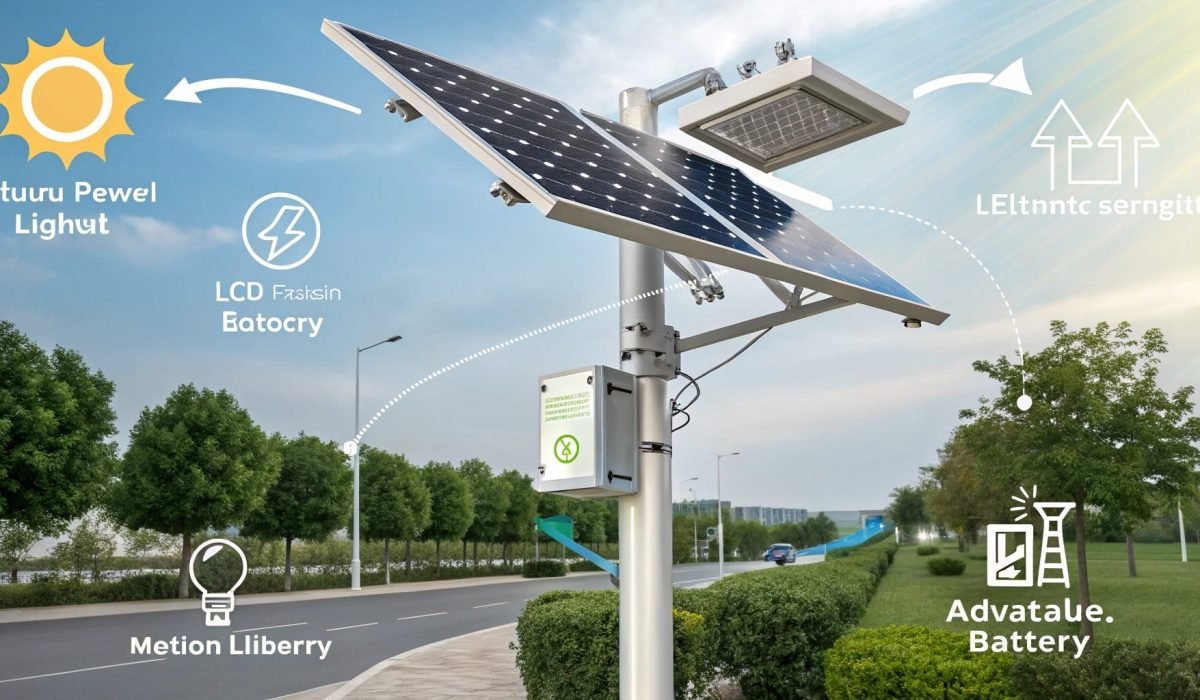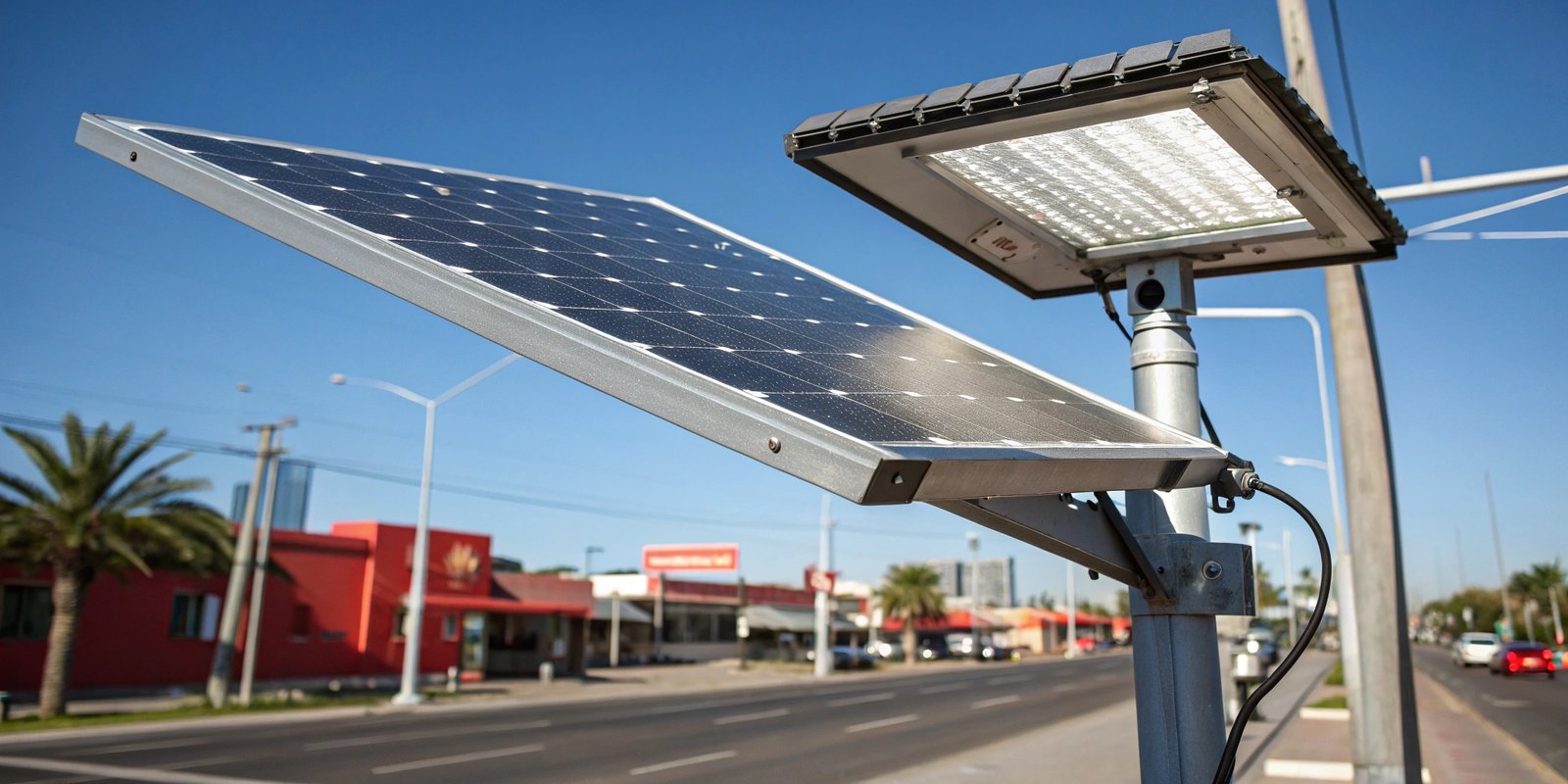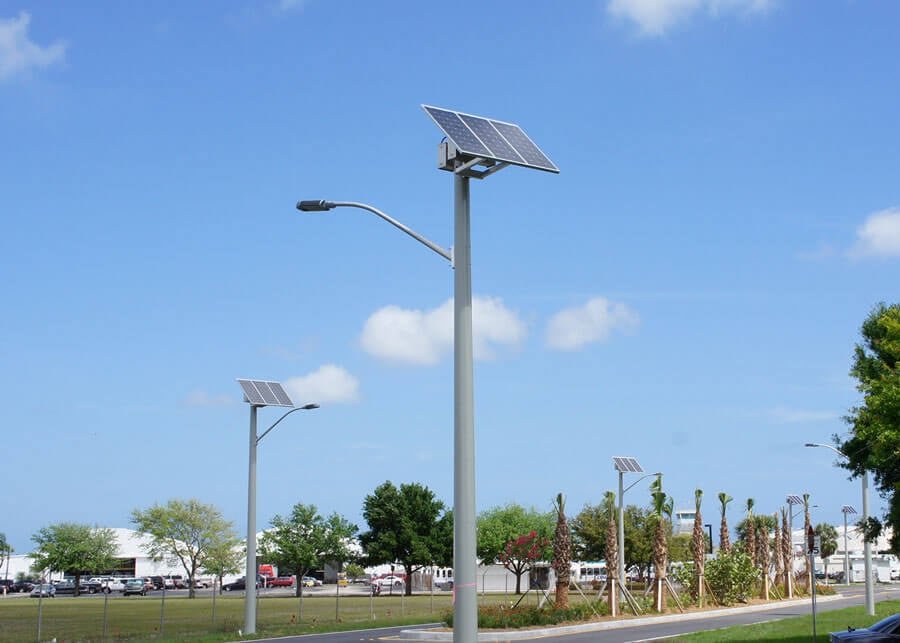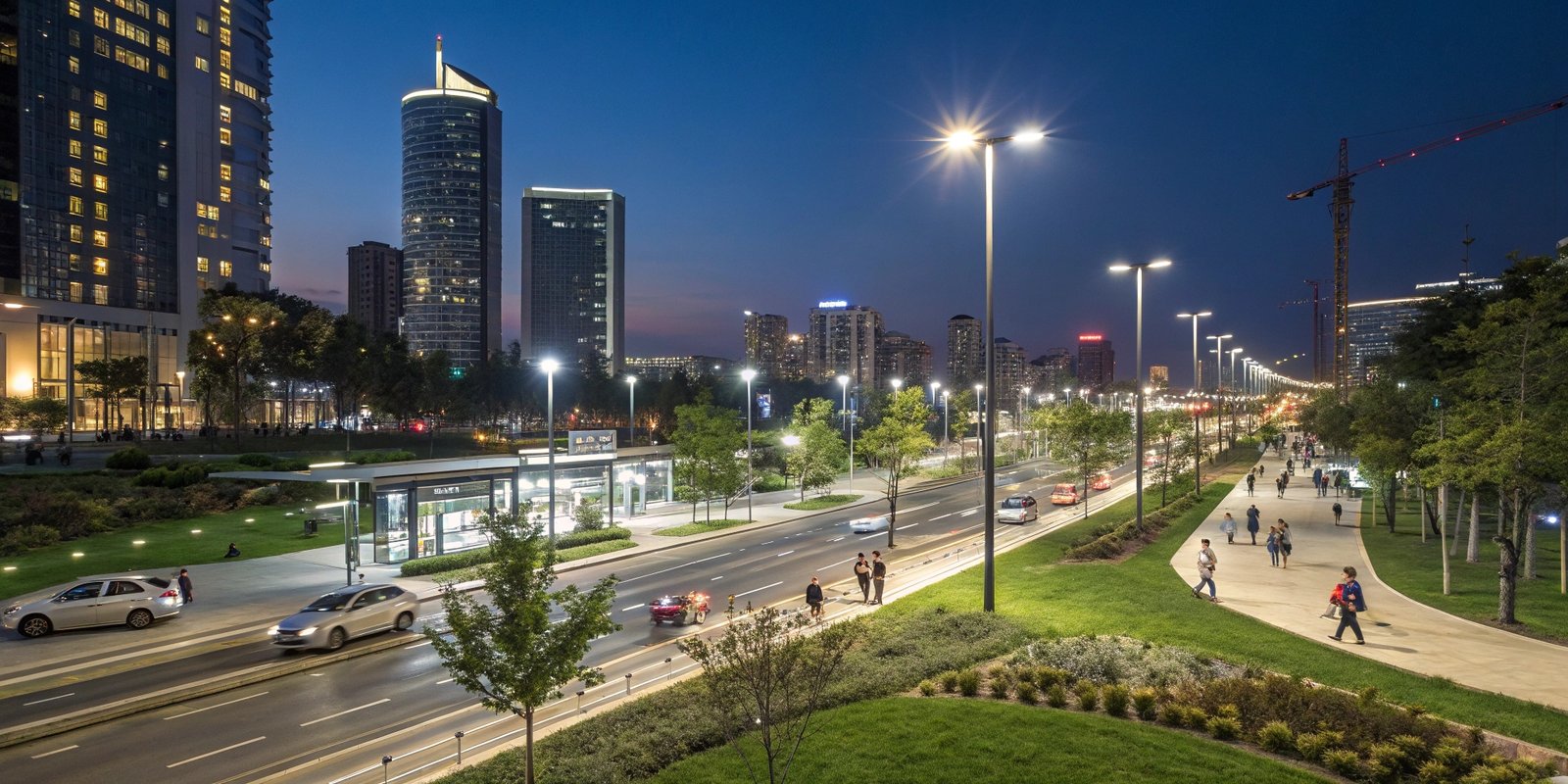Solar energy is an abundant, clean, and renewable power source. Its adoption has revolutionized how we utilize energy, especially in lighting applications. Solar street lights with sensors are transforming road lighting, particularly in rural and urban areas, by replacing traditional grid-powered systems.
Solar street lights with sensors combine renewable energy and advanced technology to offer efficient, eco-friendly, and adaptive lighting solutions. Their components and applications are designed to maximize energy utilization and meet diverse needs.
This guide explores the structure, functionality, and key principles for applying solar street lights with sensors in various settings.
Components of Solar Street Lights with Sensors
Solar street lights with sensors consist of several essential components that work together to provide reliable illumination.
1.1 Solar Panel
The solar panel is the core component that captures sunlight and converts it into electrical energy stored in batteries.
- Monocrystalline Panels: These panels offer high conversion rates of up to 17%, making them ideal for maximizing energy efficiency.
- Polycrystalline Panels: Moderate efficiency (~12%), but more cost-effective for certain applications.
- Panels must be oriented correctly and kept clean for optimal energy absorption.
1.2 Lithium Battery
Lithium batteries store energy during the day and discharge it at night based on instructions from the solar controller.
- Quality and lifespan depend heavily on the manufacturer’s expertise.
- Batteries must be correctly sized to balance storage capacity and energy consumption.
- Proper maintenance ensures long-term performance.
1.3 Solar Controller
The solar controller manages energy flow between the panel, battery, and LED light.
- High-quality, branded controllers are essential for system reliability and longevity.
- Advanced controllers include smart features like adaptive lighting schedules and protection against overcharging or discharging.
1.4 LED Light Source
Modern LED light sources are highly efficient and durable, offering bright illumination with low energy consumption.
- Integrated flat lamp heads enhance heat dissipation, reducing wear.
- LEDs provide consistent light output, even in extreme temperatures.
1.5 Solar Street Light Pole
The pole is customizable to meet design and client requirements.
- Variations in size, style, and material affect costs and application suitability.
- Durable materials ensure stability and resistance to environmental wear.
Application Fields of Solar Street Lights with Sensors
Solar street lights with sensors serve a wide range of lighting needs across different settings.
Rural and Township Lighting
These lights enhance illumination in less urbanized areas, providing cost-effective solutions where grid power is unavailable.
Urban Areas
Ideal for public spaces like parking lots, playgrounds, parks, and green spaces. Sensors optimize lighting based on activity levels, reducing unnecessary energy consumption.
High-End Locations
Applications include luxury resorts, golf courses, and villa communities, where aesthetics and energy efficiency are prioritized.
Specialized Applications
Solar street lights with sensors are increasingly used for highway warning signs, bridge lighting, and replacing grid-powered systems in critical locations.
Principles for Applying Solar Street Lights with Sensors
Effective implementation requires adhering to specific design and operational principles.
3.1 Practicality Principle
- Optimize for energy-saving objectives, especially in urban systems.
- Address challenges like fluctuating weather conditions or high energy demand.
- Use hybrid designs (solar + grid power) in areas requiring uninterrupted operation.
3.2 Efficiency Principle
- Minimize energy consumption while maximizing functionality.
- Consider local factors like sunshine duration, fog, and rainfall in the design process.
- Leverage real-time data to adjust settings and optimize performance.
3.3 Traffic Safety Principle
- Ensure lighting enhances traffic safety and efficiency.
- Design road segment lighting to meet transportation needs, creating secure and comfortable environments.
- Use sensors to adapt lighting levels based on traffic patterns and pedestrian activity.
Conclusion
Solar street lights with sensors offer unparalleled benefits in energy efficiency, environmental sustainability, and adaptability. Careful design and implementation maximize their functionality and reliability, making them ideal for urban and rural settings alike. Adopting these systems is a critical step toward achieving sustainable development goals in lighting infrastructure.






